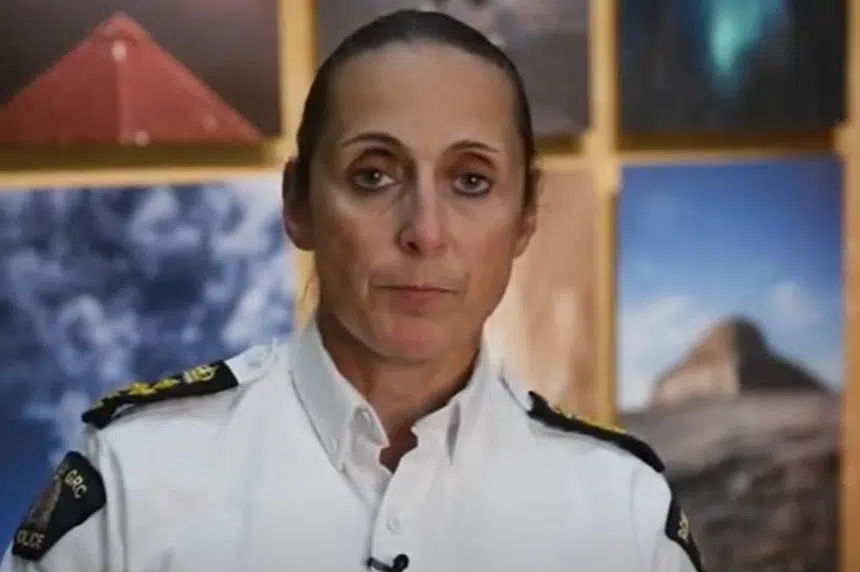The commanding officer the Saskatchewan RCMP says Myles Sanderson — the suspect in the James Smith Cree Nation mass stabbings — wasn’t in Regina during the manhunt.
Assistant Commissioner Rhonda Blackmore and Evan Bray — the former chief of the Regina Police Service — discussed the case on Bray’s show on Friday.
In September of 2022, Sanderson killed 11 people — 10 on the James Smith Cree Nation and one in the nearby community of Weldon — and injured 18 in the deadliest mass stabbing in Canadian history. One of the victims was Sanderson’s brother Damien, who initially was considered a suspect in the murders.
During the subsequent manhunt, police said they believed Sanderson may have been seen in Regina.
Bray and Blackmore discussed the information that the RCMP and Regina Police Service had received that led to them to teach that conclusion.
“We had that information and it was believed to be credible at that time,” Blackmore said.
She said the information was the reason the RCMP put out a public alert.
“We had an individual who had demonstrated that he was intent on doing large-scale harm to individuals. At that point, we knew we had 11 individuals who were deceased and it was important that we put the information out given that afternoon on Sunday September 4, that there was a (Saskatchewan Roughriders) game,” she said.
Even in April, when the RCMP laid out a timeline of the events, the Mounties didn’t rule out the possibility that Sanderson had been in the Queen City.
However, Blackmore said the RCMP now is quite confident that Sanderson was not in Regina.
“There was information initially that it was Myles and his brother Damien but we do know now that Myles actually committed a homicide on his brother and his brother was not with him,” Blackmore said.
“So, knowing that in hindsight, we were able to deem the information not credible because the information we were getting up was based on two individuals, and we know that not to be accurate after the fact.”
As for the James Smith Cree Nation, Blackmore said the RCMP was working hard to ensure the community’s needs were met.
“We’re advocating on their behalf to get more Indigenous applicants from James Smith …,” she said.
“We’ve had lots of dialogue with the chiefs and with members of the community both initially (and) in the weeks and months afterwards, making sure we were there to do proactive patrols.”
Blackmore said the RCMP’s Indigenous Policing service has also played a pivotal role in strengthening the relationship between the RCMP and James Smith.
Blackmore also mentioned the briefing RCMP gave in April about the massacre’s expanded timeline of events.
She said the Mounties provided as much information as they could without compromising the scheduled inquest into the massacre.
“Lots of effort was put into making sure that we had addressed not only the information for the families but the cultural aspects as well,” Blackmore said.
“We attended a pipe ceremony in the morning and those types of events, making sure that we are engaged with the community and respecting their cultural tradition.”
Saskatchewan Marshals Service
When asked about how the RCMP might collaborate with the province’s planned new police force, Blackmore said the Mounties are still waiting for more details.
“In many aspects, we see the mandate of the marshals as very similar or repetitive to what we’re already doing when they talked about warrant enforcement and such,” she said.
“We’re still a little bit unclear exactly why some of those resources aren’t being put into the RCMP to do the things that we’re doing (and) to have more funds to be able to do that.”











